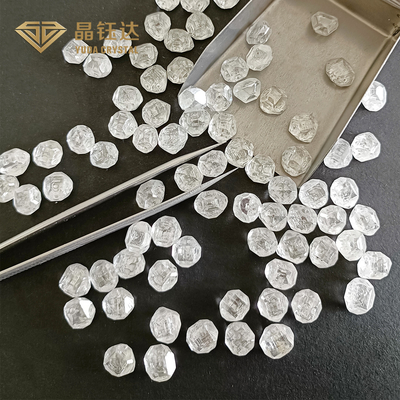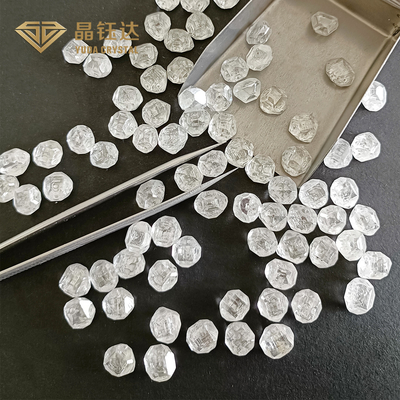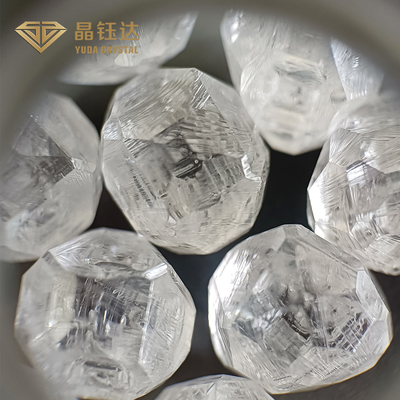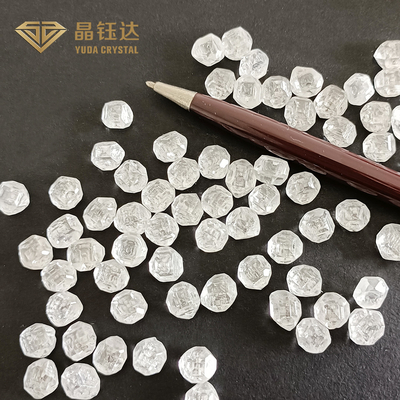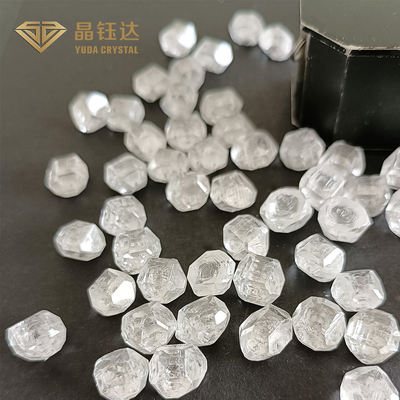DEF Color VVS VS Clarity Rough 4-5ct White HPHT Lab Grown Diamonds
Lab Grown Diamonds Description
Lab grown diamond is a small diamond as the seed, by simulating the growth of natural diamonds to grow. It has the same physical, chemical and optical properties as natural diamond, and the hardness is 10. There is no such thing as genuine or fake diamonds. As long as there is reasonable public disclosure of the sale of lab grown diamonds, lan grown diamonds are a segment that can reasonably exist in the market. At present the international academic circle all affirms it is to have the diamond that wears value. Therefore, both international and domestic authorities can issue grading certificates for cultivating diamonds, such as IGI, GIA, HRD, NGTC, etc.
Parameters Of Lab Grown Diamonds
| Product Name |
Synthetic (Lab grown) diamond |
| Material |
Lab-grown |
| Color |
D-H |
| Size |
0.003PCS/CT-7CTS/PC |
| Grade |
VVS VS SI |
| Used |
Jewelry (necklace,ring) |
| Application |
For Cutting Lab Grown Loose Diamonds |
| Place Of Origin |
Zhengzhou, China |
Characteristics Of Lab Grown Diamonds
| The Difference Between Lab Diamond And Natural Diamond |
| Attribute |
Lab Grown Diamonds |
Natural diamond |
Distinction |
| Chemical composition |
C(carbon) |
C(carbon) |
No |
| Refractive index |
2.42 |
2.42 |
No |
| Relative density |
3.52 |
3.52 |
No |
| Dispersion |
0.044 |
0.044 |
No |
| Hardness value |
90 GPA |
90 GPA |
No |
| Thermal conductivity |
2*103 W/M/K |
2*103 W/M/K |
No |
| Thermal property |
0.8*10-6 K |
0.8*10-6 K |
No |
| Light transmittance |
DEEP UV TO FAR TR |
DEEP UV TO FAR TR |
No |
|
Resistivity
|
1016 OHM-CM
|
1016 OHM-CM
|
No
|
|
Compressibility
|
8.3*10-13 M2/N
|
8.3*10-13 M2/N
|
No
|
From a scientific point of view, cultivated diamonds are exactly the same as natural diamonds, the only difference being where they are formed.
1. Inclusions
These inclusions are round, rod-like, plate-like and needle-like, and their arrangement is related to the boundary of internal growth zone. Inclusions can also be dispersed throughout the crystal as particles. These inclusions are opaque and appear golden or black in reflected light with a metallic luster.
2. Color
The vast majority of synthetic diamonds are yellow, thirsty yellow (most) with an hourglass ribbon; And natural diamond is colorless, light yellow and other color. At present, the better quality CVD diamond industry can achieve colorless or light brown color, almost unrecognizable to the naked eye.
3. Abnormal birefringence
Under orthogonal polarization, natural diamonds show complex abnormal birefringence characteristics due to the complexity of growth and migration process, such as irregular banded, wavy, patch and lattice, etc., while synthetic diamonds show weak abnormal birefringence, and some synthetic diamonds show bright cross bands.
Lab Grown Diamonds Details


 Your message must be between 20-3,000 characters!
Your message must be between 20-3,000 characters! Please check your E-mail!
Please check your E-mail!  Your message must be between 20-3,000 characters!
Your message must be between 20-3,000 characters! Please check your E-mail!
Please check your E-mail! 


